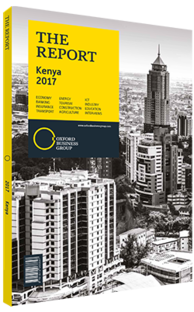Ronald Ndegwa, Managing Director, Savannah Cement: Interview

Interview: Ronald Ndegwa
What do you consider Kenya’s competitive advantages in terms of cement production?
RONALD NDEGWA: Geographically, Kenya sits in a strategic regional position. East Africa is a net importer of clinker - a key ingredient of cement - and for the volume of cement, you need 65% clinker. To import clinker, we can use the Port of Mombasa, which takes vessels up to 50,000 tonnes. Because of this, Kenya is a regional supplier of cement. It goes beyond the location though. Kenya is also very well equipped in terms of having the right skills that can run a cement manufacturing plant. We also have a significant and reliable supply of power, unlike some neighbouring countries. We are 100% dependent on Kenya Power and we ran this plant for the first two years without needing to use a power generator. I believe that East Africa represents one of the best markets in the world for cement production, and Kenya sits in the middle of East Africa.
How would you rate the affordability and accessibility of power for cement production?
NDEGWA: The cost of power matters to me in terms of what I pay compared to what my neighbours in the region pay. When we compare ourselves to countries like Egypt and Ethiopia, we know their tariffs are lower, but that doesn’t really have an impact on us. What does have impact on us, is the reliability and consistency of power rather than the actual cost. To make cement we use approximately 28 KW per tonne which ends up being about 15-20% of the cost of production. Every month, we report directly to Kenya Power on the number of outages and the duration of these outages. We may have anywhere from one to eight power outages per month. However, even if we have a higher number of outages, if the duration of outages remains low, we are satisfied with that. Kenya Power has been aggressively upgrading the electrical distribution networks and they have developed alternative power distribution sources to ensure a constant stream of power.
What would you say are the primary demand drivers for cement in the country?
NDEGWA: Kenya has an enormous housing deficit and there is a lot of rural migration which is increasing demand for housing in urban areas. We are told that the deficit is approximately 200,000 units per year, and it is growing. Despite the enormous amount of public infrastructure projects, 60% of our sales go to individual builders. The government has been investing heavily in infrastructure projects, which accounts for another 20% of demand, and the remaining 20% goes toward private developers, who are in charge of some of the larger construction projects in the country. Due to Kenya’s high rate of growth, the demand drivers are likely to be sustained in the long-term. Furthermore, Kenya has not even scratched the surface in terms of rural infrastructure development and we have yet to really move into investing in those areas.
Why do you think profit margins have been tight in Kenya’s cement industry?
NDEGWA: Profit margins in the cement industry in Kenya are declining. Years ago, there were only two cement producers and customers were forced to buy from them, so prices were inflated. Now there are a total of eight players in the market and we have more capacity in Kenya than local demand so we often have to compete on price – especially on the big-ticket projects. Prices have certainly come down, but we have not had a price reduction in the last eight months. There will continue to be competition, so prices will continue to decline. However, one of the ways in which we ensure our profitability is through the integration of technology. This is critical as it permits us to produce cement at a lower cost.
You have reached the limit of premium articles you can view for free.
Choose from the options below to purchase print or digital editions of our Reports. You can also purchase a website subscription giving you unlimited access to all of our Reports online for 12 months.
If you have already purchased this Report or have a website subscription, please login to continue.

